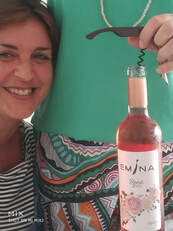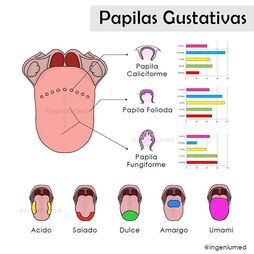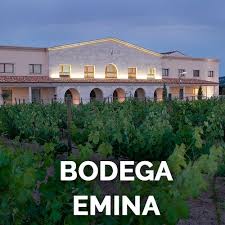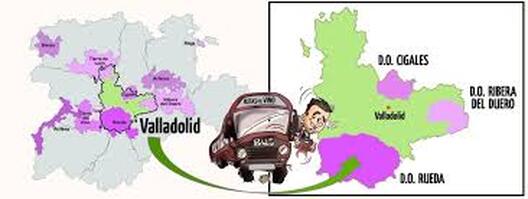|
Vino rosado pálido, procedente de parcelas propias de la denominación de origen Cigales, de Bodega Emina, perteneciente al Grupo Matarromera. Emina en latín significa : amada y en su día, una hemina era la medida límite que tenían los monjes para beber al día, recogemos esta palabra como pasión al mundo del vino, respetando la cultura y nuestro pasado. Su origen está en una parcela caliza en Quintanilla de Trigueros, conocida como el Terrón Blanco, provincia de Valladolid. Este viñedo plantado en espaldera, se encuentra a 855 metros de altitud, lo cual favorece la lenta maduración de la uva. Esto unido a una vendimia temprana, mantiene la frescura del vino rosado y contribuye al característico color del mismo. Este viñedo posee uva de las variedades Tempranillo, Cabernet Sauvignon, Merlot y Garnacha entre otras... CATA : La mezcla de variedades tintas y blancas que contiene este vino rosado, consiguen que tengamos en la copa un pale rosé elegante y limpio, aunque para mí no consigue los objetivos de su fama…Y lo siento, pero no he conseguido averiguar, que porcentaje y tipo de uva contiene exactamente… Color rojo aclarado , con suaves reflejos ambarinos, brillante y apetecible. En nariz : Flores blancas y toques minerales (tiza) , me arriesgo a decir que supuestamente puede ser causado por la fermentación alcohólica controlada de la mezcla de variedades tintas y blancas, más que por la mineralidad de su suelo calizo… En paladar, percibimos un desequilibrio entre las sensaciones frescas y frutales de la acidez y la fase aromática que le da cierta complejidad al vino… Vivaz y picante en la punta de la lengua. Así que este matiz da lugar a preguntas, cuestiones y curiosidades que voy a intentar resolver en la siguiente página.  En esta ocasión decidí acompañarlo de un “suquet de peix” rico guiso de rape y marisco con patatas y salsa marinera con almendras, plato tradicional de la gastronomía valenciana, y tuvo un éxito espectacular, debido a su tono algo picante, muy favorecedor para los vinos rosados. Y musicalmente hablando, creo que su maridaje sin duda sería una habanera “La Bella Lola”, en honor a la familia de mi madre y en especial a mi prima Lola. Casi siempre al degustar un vino, nos surge diversidad de opiniones y “controversia” en cuanto a que lo que cada uno percibimos acerca de la acidez o amargor, dulzor, cuerpo…Y eso me encanta! Por eso ahora os intento definir un poco los sabores que reconoce nuestra lengua. La lengua nos da poca información pero muy relevante sobre un vino. Distinguir las características de los vinos requiere de práctica. Cerrando los ojos podremos percibir mejor las características de los vinos. .Acidez : Se reconoce en los mejores vinos por una fuerte sensación de hormigueo en los laterales de la lengua, dejándola áspera, y por provocar irritación en los labios. .Los taninos : El sabor amargo de los taninos se identifica en la parte interior de la boca provocando que la lengua se seque. Además, después de tragar el vino persiste una sensación amarga en la boca. .La dulzura/fruta: La dulzura se determina por la cantidad de azúcar que permanece en los mejores vinos después de que han pasado por el proceso de la fermentación. Pero, ¿Cómo distinguirla? Percibimos la dulzura en la punta de la lengua, lo que provoca que la primera impresión con el vino sea una sensación de hormigueo en la punta de lengua. Muchos de los mejores vinos poseen sabores frutales con notas a fresas, manzanas, peras, moras o arándanos… Este tipo de vinos se suelen confundir con los dulces entre personas con dificultad para diferenciar las características del vino, sin embargo existe un pequeño truco! Mientras que el carácter frutal se percibe con la nariz, tanto en vía nasal como retronasal, el vino dulce se reconoce en la lengua. Por lo tanto, la clave reside en degustar el vino tapándonos la nariz, si el vino ya no tiene el sabor dulce, entonces se trata de un vino afrutado. Si el sabor continúa dulce entonces estás ante un vino dulce afrutado. .Umami : Proviene de la combinación de los términos japoneses umai (うまい) ‘delicioso’ y mi (味) ‘sabor’. Si bien es poco frecuente, algunos prescriptores de vino ya han utilizado este término en sus notas de cata. Es un sabor que no es dulce, salado, amargo o ácido, para muchos indefinible y además no es una percepción subjetiva de alguien capaz definir ese algo tan especial y suculento que satisface al paladar. Estamos hablando del umami, ese quinto sabor tan escurridizo como apreciado que también se manifiesta en el vino para quien es capaz de reconocer la complejidad de determinar la cantidad de glutamato que contiene un vino y señala los procesos de fermentación y crianza como factores fundamentales. Otra forma de describir este sabor sería escoger aromas como minerales, humo, tierra o sabores optimistas. ¿Rosado o clarete? Bajo este mismo titular, Tomás Jurío publicó en 2018 un interesantísimo y más que recomendable artículo en la revista ARGI en el que, tras aleccionar al lector sobre la historia de estos dos tipos de vinos, concluye que, a día de hoy, un rosado y un clarete son exactamente lo mismo “desde el punto de vista legal de designación y elaboración”, ya que el último decreto ley publicado al respecto (1363/2011) no especifica ninguna norma de elaboración ni de composición varietal. El dilema del color. Ahora está de moda el rosa pálido, provenzal, elegante y delicado; el ojo de perdiz y la piel de cebolla. Enfrente, el rosa frambuesa, frutal, intenso, vivo y primario, o lo que es lo mismo, el color del clarete de Cigales de toda la vida. El color tradicional de estos rosados , es más intenso porque antiguamente se tardaba más en prensar la uva y el mosto adquiría más color de los hollejos; eran vinos más intensos y frutales en aromas y sabores. 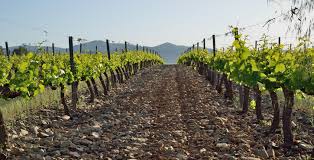 Pale rosé wine, from plots of the Cigales denomination of origin, from Bodega Emina, belonging to the Matarromera Group. Emina in latin means ‘beloved’ and a hemina was once the limit measure that a monk could drink per day, we recovered this word as a contribution to the world of wine, with full respect to ourt culture and tradition. Its origin is in a limestone plot in Quintanilla de Trigueros, known as the Terrón Blanco, in Valladolid province. This trellised vineyard, is located at an altitude of 855 meters, which favors the slow ripening of the grapes. This, together with an early harvest, maintains the freshness of the rosé wine and contributes to its characteristic colour. This vineyard has grapes of the Tempranillo, Cabernet Sauvignon, Merlot and Garnacha varieties among others... TASTING: The mixture of red and white varieties that this rosé wine contains, makes possible for us to enjoy an elegant and clean pale rosé in the glass, although on my opinion, does not achieve the goals of its fame ... And I'm sorry, but I have not been able to find out what percentage and type of grape contains exactly... Lightened red color, with soft amber reflections, bright and appetizing. On the nose: White flowers and mineral touches (chalk), I venture to say that it can supposedly be caused by the controlled alcoholic fermentation of the mixture of red and white varieties, rather than by the minerality of its limestone soil ...On the palate, we perceive an imbalance between the fresh and fruity sensations of acidity and the aromatic phase that gives the wine a certain complexity ... Lively and spicy on the tip of the tongue. So this nuance gives rise to questions, issues and curiosities that I will try to solve on further on.  On this occasion I decided to accompany it with a “suquet de peix”, a monkfish and seafood stew of potatoes and marine sauce with almonds, a traditional dish of valencian gastronomy, and it was spectacularly successful, due to its somewhat spicy tone, very appropriate for the rosé wines. And musically speaking, I think their pairing would undoubtedly be a habanera song "La Bella Lola", in honour of my mother's family and especially my cousin Lola. Almost always when tasting a wine, a diversity of opinions and "controversy" arise as to what each of us perceives about acidity or bitterness, sweetness, body ... And I love that! So now I'm trying to define a little the flavour that our language recognizes. The tongue gives us brief, but very relevant information about a wine. To perceive the characteristics of wines requires practice. Closing our eyes helps for a better perception of wines characteristics. Acidity: It is recognized in the best wines by a strong tingle sensation on the sides of the tongue, leaving a rough feeling and by causing irritation to the lips. Tannins: The bitter taste of tannins is identified on the inside of the mouth causing the tongue to dry out. In addition, after swallowing the wine a bitter sensation persists in the mouth. 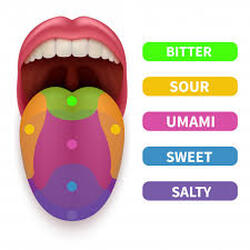 Sweetness / fruit: Sweetness is determined by the amount of sugar that remains in the best wines after they have gone through the fermentation process. But how to distinguish it? We perceive the sweetness on the tip of the tongue, which causes the first impression with the wine to be a tingling sensation on the tip of the tongue. Many of the best wines have fruity flavours with notes of strawberries, apples, pears, blackberries or blueberries ... These types of wines are often confused with sweets among people who have difficulty differentiating the characteristics of the wine, however there is a little trick! While the fruity character is perceived with the nose, both nasal and retro nasal, sweet wine is recognized on the tongue. Therefore, the key lies in tasting the wine by holding our noses, if the wine no longer has the sweet taste, then it is a fruity wine. If the flavour continues sweet that is a fruity sweet wine. Umami: It comes from the combination of the Japanese terms umai (う ま い) ‘delicious’ and my (味) ‘taste’. Although rare, some wine prescribers have already used this term in their tasting notes. It is a flavour that is not sweet, salty, bitter or acid, for many indefinable and it is also not a subjective perception of someone capable of defining that something so special and succulent that satisfies the palate. We are talking about umami, that fifth flavour so elusive as it is appreciated that also manifests itself in wine for those who are able to recognize the complexity of determining the amount of glutamate that a wine contains and points out the fermentation and aging processes as fundamental factors. Another way to describe this flavour would be to choose aromas like mineral, smoke, earth, or upbeat flavours.  Rosé or clarete? Under this same headline, Tomás Jurío published in 2018 a very interesting and highly recommended article in the ARGI magazine in which, after instructing the reader on the history of these two types of wines, he concludes that, today, a rosé and a clarete are exactly the same "from the legal point of view of designation and elaboration", since the last decree law published in this regard (1363/2011) does not specify any norm of elaboration or varietal composition. The color dilemma controversy. Nowadays the pale pink, provencal, elegant and delicate, is in fashion as partridge eye and onion skin are too. Opposite, the raspberry pink, fruity, intense, alive and primary, or what is the same the colour of the clarete of Cigales . The classic colour of these rosés is more intense because in the past it took longer to press the grapes and the must acquire more colour from the skins; those wines were more intense and fruity in aromas and savours.
1 Comentario
|
irene sayasEntusiasta y conocedora de la magia del vino. El vino evoca, convoca y provoca... *Archivos:
|
Cómo contactarnos / How to contact usTeléfono 690 073 871 |
Suscribirse / SubscribeÚnete a nuestra lista de correo hoy!
Sign up to our mailing list now! |

